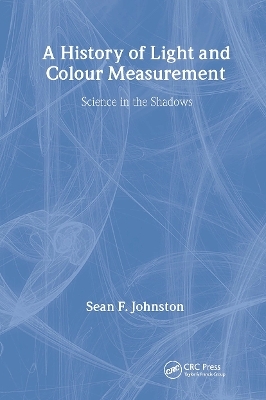
A History of Light and Colour Measurement
Science in the Shadows
Seiten
2001
Institute of Physics Publishing (Verlag)
978-0-7503-0754-3 (ISBN)
Institute of Physics Publishing (Verlag)
978-0-7503-0754-3 (ISBN)
Judging the brightness and color of light has long been contentious. Alternately described as impossible and routine, it was beset by problems both technical and social. How trustworthy could such measurements be? This book presents a history of the hidden workings of physical science - a technical endeavor embedded in a social context.
2003 Paul Bunge Prize of the Hans R. Jenemann Foundation for the History of Scientific Instruments
Judging the brightness and color of light has long been contentious. Alternately described as impossible and routine, it was beset by problems both technical and social. How trustworthy could such measurements be? Was the best standard of intensity a gas lamp, an incandescent bulb, or a glowing pool of molten metal? And how much did the answers depend on the background of the specialist?
A History of Light and Colour Measurement: Science in the Shadows is a history of the hidden workings of physical science-a technical endeavor embedded in a social context. It argues that this "undisciplined" subject, straddling academia, commerce, and regulation, may be typical not only of 20th century science, but of its future.
Attracting scientists, engineers, industrialists, and artists, the developing subject produced a new breed of practitioners having mixed provenance. The new measurers of light had to decide the shape not only of their specialism but of their careers: were they to be a part of physics, engineering, or psychology? The physical scientists who dominated the subject into the early 20th century made their central aim the replacement of the problematic human eye with physical detectors of light. For psychologists between the wars, though, describing the complexity of color was more important than quantifying a handful of its dimensions. And after WWII, military designers shaped the subject of radiometry and subsumed photometry and colorimetry within it. Never attaining a professional cachet, these various specialists moved fluidly between science and technology; through government, industry, and administration.
2003 Paul Bunge Prize of the Hans R. Jenemann Foundation for the History of Scientific Instruments
Judging the brightness and color of light has long been contentious. Alternately described as impossible and routine, it was beset by problems both technical and social. How trustworthy could such measurements be? Was the best standard of intensity a gas lamp, an incandescent bulb, or a glowing pool of molten metal? And how much did the answers depend on the background of the specialist?
A History of Light and Colour Measurement: Science in the Shadows is a history of the hidden workings of physical science-a technical endeavor embedded in a social context. It argues that this "undisciplined" subject, straddling academia, commerce, and regulation, may be typical not only of 20th century science, but of its future.
Attracting scientists, engineers, industrialists, and artists, the developing subject produced a new breed of practitioners having mixed provenance. The new measurers of light had to decide the shape not only of their specialism but of their careers: were they to be a part of physics, engineering, or psychology? The physical scientists who dominated the subject into the early 20th century made their central aim the replacement of the problematic human eye with physical detectors of light. For psychologists between the wars, though, describing the complexity of color was more important than quantifying a handful of its dimensions. And after WWII, military designers shaped the subject of radiometry and subsumed photometry and colorimetry within it. Never attaining a professional cachet, these various specialists moved fluidly between science and technology; through government, industry, and administration.
Johnston/, Sean F.
Chapter 1 Introduction: Making Light Count. Chapter 2 Light as a Law-Abiding Quantity. Chapter 3 Seeing Things. Chaper 4 Careers in the Shadows. Chapter 5 Labs and Legislation. Chapter 6 Technology in Transition. Chapter 7 Disputing Light and Colour. Chapter 8 Marketing Photometry. Chapter 9 Militarising Radiometry. Chapter 10 An Undisciplined Science
| Erscheint lt. Verlag | 30.9.2001 |
|---|---|
| Verlagsort | London |
| Sprache | englisch |
| Maße | 156 x 234 mm |
| Gewicht | 635 g |
| Themenwelt | Naturwissenschaften ► Physik / Astronomie ► Optik |
| ISBN-10 | 0-7503-0754-4 / 0750307544 |
| ISBN-13 | 978-0-7503-0754-3 / 9780750307543 |
| Zustand | Neuware |
| Informationen gemäß Produktsicherheitsverordnung (GPSR) | |
| Haben Sie eine Frage zum Produkt? |
Mehr entdecken
aus dem Bereich
aus dem Bereich
Grundlagen - Verfahren - Anwendungen - Beispiele
Buch | Hardcover (2022)
Hanser, Carl (Verlag)
CHF 69,95
Grundlagen und Anwendungen
Buch | Hardcover (2023)
Hanser, Carl (Verlag)
CHF 83,95


